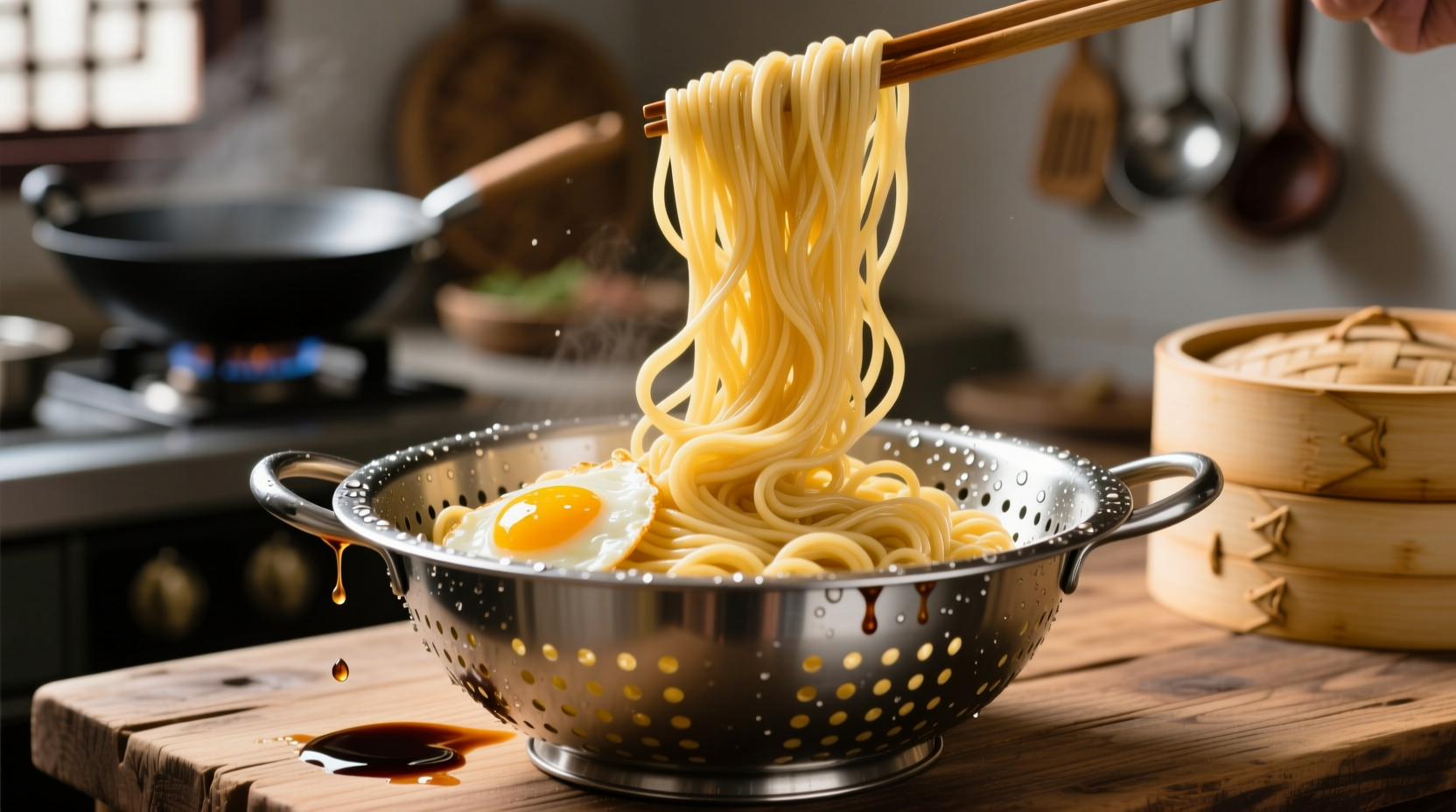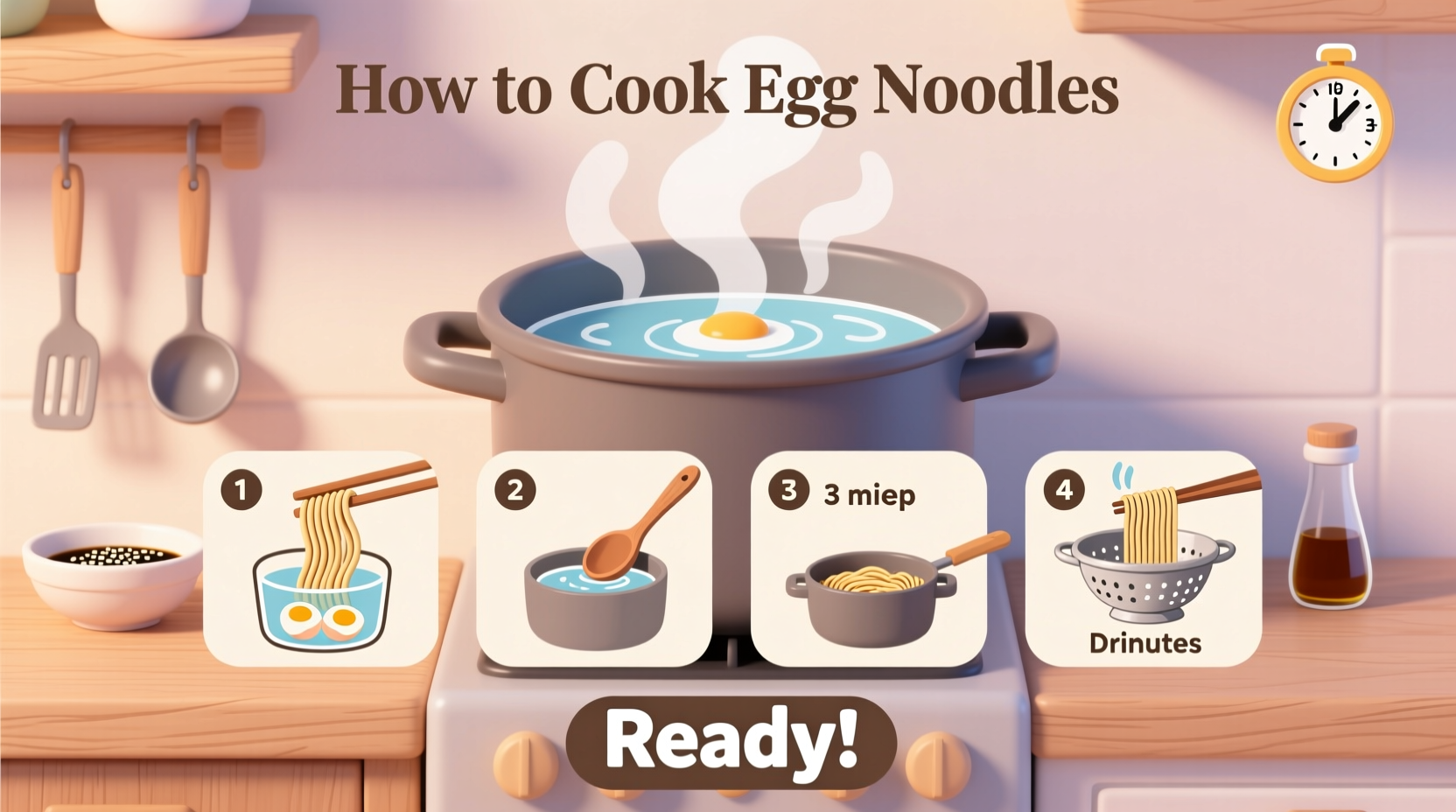Nothing beats the satisfying chew of perfectly cooked egg noodles, yet so many home cooks end up with mushy, clumped strands. As a chef who's taught thousands to master pasta fundamentals, I've discovered the critical 30-second window that separates restaurant-quality results from disappointment. This guide cuts through the confusion with science-backed timing and technique.
Your Essential Egg Noodle Toolkit
Before you begin, gather these kitchen essentials that directly impact your results:
- Large 6-8 quart pot (critical for proper water-to-noodle ratio)
- Wooden spoon or pasta fork (metal can damage delicate noodles)
- Timer (visual cues alone aren't reliable)
- Colander with fine mesh
- Reserve cup for starchy water
The Science of Perfect Egg Noodle Texture
Egg noodles contain more protein than regular pasta due to the egg content, requiring precise temperature control. The USDA's Food Safety and Inspection Service confirms that properly cooked egg noodles reach an internal temperature of 180-190°F (82-88°C), the optimal range for ideal texture without overcooking.
| Noodle Type | Water Ratio | Boil Time | Resting Time |
|---|---|---|---|
| Fresh egg noodles | 4 quarts/lb | 2-3 minutes | 30 seconds |
| Dried egg noodles | 6 quarts/lb | 4-6 minutes | 1 minute |
| Homemade thin | 5 quarts/lb | 3-4 minutes | 45 seconds |
Step-by-Step Cooking Process
Phase 1: Water Preparation (The Foundation)
Fill your largest pot with 4-6 quarts of cold water per pound of noodles. Add 1½ tablespoons of coarse salt per quart after the water reaches a rolling boil - this prevents pitting your pot. The salt concentration should match seawater (about 1.5%) for optimal flavor absorption without making noodles tough.
Phase 2: Noodle Introduction (Critical First 30 Seconds)
When water returns to vigorous boil, add noodles while stirring constantly with a wooden spoon. This initial agitation prevents immediate clumping. For dried noodles, separate strands gently with your fingers as you add them to the pot.

Phase 3: Active Boiling (Precision Timing)
Set timer immediately after adding noodles. Maintain steady boil - reduce heat slightly if water threatens to overflow. Stir every 60-90 seconds to prevent sticking. Test for doneness 1 minute before suggested time by fishing out a strand, cooling briefly, and biting. Perfect al dente offers slight resistance in the center.
Phase 4: Strategic Drainage (The Often-Missed Step)
When noodles reach desired texture, immediately pour into colander. Do not rinse unless preparing for cold salad - rinsing removes essential starch needed for sauce adhesion. Reserve 1 cup of starchy cooking water before draining completely.
Troubleshooting Common Egg Noodle Problems
Mushy noodles: Overcooking is the culprit. Set timer precisely and test early. Dried noodles cook faster than most packages indicate.
Clumped noodles: Insufficient water or inadequate initial stirring. Use proper water ratio and stir constantly for first 30 seconds after adding noodles.
Bland flavor: Undersalted water. Measure salt precisely - 1½ tbsp per quart of water after boiling.
When to Adjust Your Technique
Context matters for perfect results. Modify your approach based on these scenarios:
- For stir-fries: Undercook by 1 minute as noodles will finish cooking in the wok
- Cold noodle salads: Rinse immediately after draining to stop cooking process
- Casserole dishes: Cook 2 minutes less than package directions as baking continues cooking
- High altitude cooking: Increase water ratio to 7 quarts/lb and extend cooking time by 25%
Professional Chef's Pro Tips
"Most home cooks don't realize that egg noodles continue cooking after draining," explains Antonio Rodriguez, culinary instructor with 15 years of professional kitchen experience. "The residual heat can overcook delicate noodles in just 90 seconds. Always stop cooking 1 minute before perfect to account for carryover heat."
For restaurant-quality results, try this chef's secret: Add 1 teaspoon of baking soda to the cooking water when making Asian-style egg noodles. This slightly alkaline environment strengthens gluten structure, yielding that desirable springy texture found in premium ramen.
Serving and Storage Guidelines
Toss immediately with sauce or 1 tablespoon of oil if not serving right away. Cooked egg noodles maintain best texture when served within 15 minutes. For leftovers, store in airtight container with a drizzle of oil for up to 3 days. Reheat by plunging into boiling water for 30 seconds - never microwave, which creates uneven texture.











 浙公网安备
33010002000092号
浙公网安备
33010002000092号 浙B2-20120091-4
浙B2-20120091-4